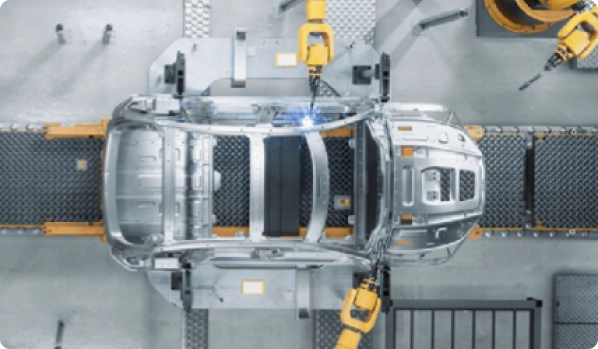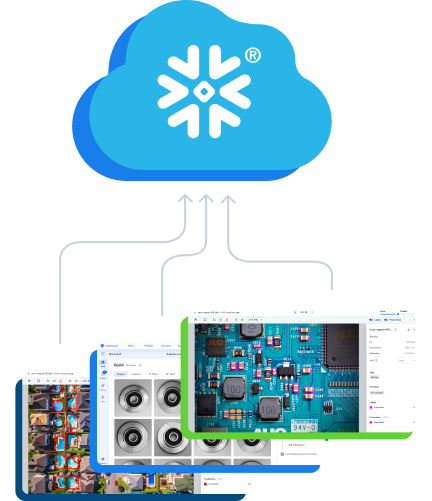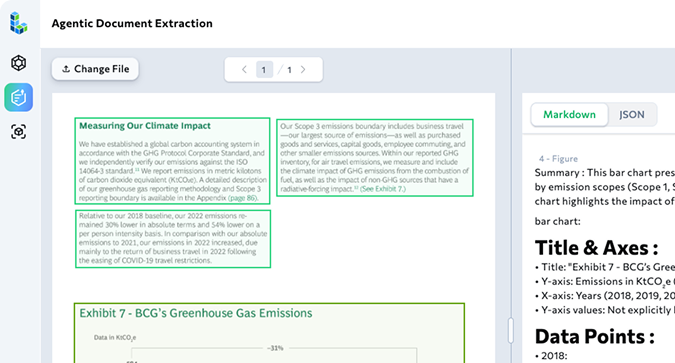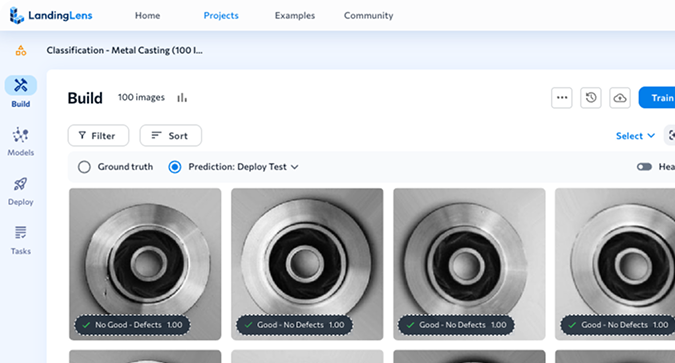
Applications of AI in the Automotive Industry
A key application of AI in automotive manufacturing is the automated inspection of parts. From printed circuit boards to full vehicle assemblies, manufacturers are leveraging machine learning in the automotive industry to power visual inspections and streamline quality checks. These solutions reduce manual effort, improve consistency, and help ensure that each component meets performance and safety standards.
LandingLens, an industry-first AI platform for visual inspection, strengthens quality assurance by improving accuracy and reducing false positives. The end-to-end platform standardizes deep learning solutions that reduce development time and scale projects easily to multiple facilities across the globe. See more benefits of AI in the automotive industry below.
Maintain Quality, Boost Efficiency, Ensure Compliance
A Complete Inspection System
- Automotive manufacturing involves many part types of varying shapes and sizes. Defects in these parts can lead to problems for manufacturers and customers, so identifying defects early in the process is a top priority. Certain complex inspection tasks present problems for rules-based machine vision solutions, but deep learning software can help.
- LandingLens software lets automotive manufacturers maintain product quality by deploying their own AI deep-learning models and optimizing inspection accuracy without any impact on production.
- Automotive manufacturers can deploy LandingLens to augment existing automated inspection systems. LandingLens can augment a machine vision system by providing an added layer of security. For example, if a rules-based system rejects a part, LandingLens can reevaluate the rejection to distinguish an actual defect from an acceptable variation.
- It ensures that acceptable parts move to the next assembly step, maintaining an efficient production flow while catching defects early in the process.


